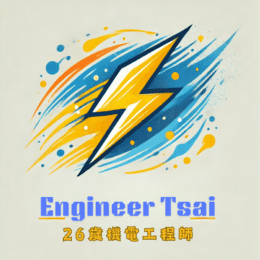Watch Now: How Do Battery Work?
Discover how battery generate electricity and power everyday devices, from phones to electric vehicles!
What Is a Battery?
A battery is a device that converts chemical energy into electrical energy through electrochemical reactions. It consists of three main components:
- Anode (Negative Terminal): Releases electrons during discharge.
- Cathode (Positive Terminal): Accepts electrons during discharge.
- Electrolyte: Positioned between the anode and cathode, facilitating ion movement between them.
These components work together to generate electrical current.
How Does a Battery Produce Electricity?
Batteries operate based on redox reactions, where oxidation and reduction occur simultaneously:
- Oxidation at the Anode: The anode loses electrons, releasing positive ions into the electrolyte.
- Reduction at the Cathode: The cathode gains electrons, completing the circuit.
- Electron Flow: Released electrons travel through an external circuit, powering devices.
The efficiency and energy output of these reactions depend on the materials used for the anode, cathode, and electrolyte.

Types of Batteries
Primary Battery
Primary batteries are designed for single-use applications and cannot be recharged:
- Alkaline Batteries: Widely used in household devices like remote controls and clocks.
- Zinc-Carbon Batteries: A cost-effective option for low-power devices.
Secondary Batteries
Secondary batteries are rechargeable and have a wide range of applications:
- Lithium-Ion Batteries: Found in smartphones, laptops, and electric vehicles, offering high efficiency and long life.
- Nickel-Metal Hydride (NiMH) Batteries: Commonly used in camera flashes and cordless phones.
- Lead-Acid Batteries: Used for car starters and uninterruptible power supplies (UPS).
Everyday Applications of Battery
Household Devices
Batteries provide convenient power for various household items:
- Remote Controls: Primary batteries offer steady and reliable power.
- Mobile Phones: Lithium-ion batteries deliver long-lasting and efficient performance.
Transportation
- Electric and Hybrid Vehicles: Depend on rechargeable batteries to power motors.
- Conventional Cars: Use lead-acid batteries to start engines.
Renewable Energy Storage
In solar and wind energy systems, batteries store excess energy for use during the night or on windless days.

Future Directions in Battery Development
High-Energy-Density Batteries
Future batteries aim to achieve higher energy density, enabling:
- Extended Range for Electric Vehicles: Longer driving distances on a single charge.
- Lighter Electronic Devices: Compact and portable gadgets with increased efficiency.
Solid-State Batteries
Solid-state batteries utilize solid electrolytes instead of liquid ones, offering:
- Enhanced Safety: Reduced risks of leaks or fires.
- Improved Stability: Better performance under extreme conditions.
These features make solid-state technology a promising contender for next-generation batteries.
Sustainable Materials
With growing environmental awareness, the focus shifts to:
- Renewable Materials: Using biodegradable or recyclable components to reduce waste.
- Eco-Friendly Manufacturing: Minimizing the environmental impact of battery production.
These advancements not only cater to technological demands but also align with global sustainability goals, paving the way for a cleaner and more efficient energy future.

Conclusion
Batteries serve as a cornerstone of modern technology, with their principles and applications profoundly impacting our daily lives and the broader energy landscape. Understanding how batteries work and their future directions empowers us to make informed choices and embrace sustainable energy innovations.
From disposable primary batteries to rechargeable secondary ones, these energy sources remain integral to powering our devices, vehicles, and renewable energy systems. As technology advances, batteries will continue to shape a more efficient and sustainable future.
Further Reading and Practical Suggestions
As a core component of modern technology, batteries encompass essential knowledge about energy conversion and storage. If you’re eager to delve deeper, consider exploring the following topics:
- 《What is Electricity? — The Basics of Current》
Discover the fundamental concepts of electricity, laying the groundwork for understanding how batteries generate and deliver power. - 《Fundamentals of Voltages: How to Drive Current?》
Analyze the relationship between voltage and batteries, exploring how internal battery voltage propels electron flow. - The Future of Lithium-Ion Batteries: Breakthroughs and Applications (Coming Soon)
Explore innovations in lithium-ion technology and their pivotal role in high-performance energy storage solutions. - Comparing Battery Types: From Lead-Acid to Lithium-Ion (Coming Soon)
A detailed comparison of battery characteristics, advantages, and disadvantages to guide optimal choices for various applications.
By understanding the mechanisms behind battery operation, you’ll gain a comprehensive view of its applications and future trends.
Stay Updated
Subscribe to our updates and stay ahead with the latest insights into electrical knowledge and cutting-edge technology, ensuring you’re always a step ahead in the world of energy!


